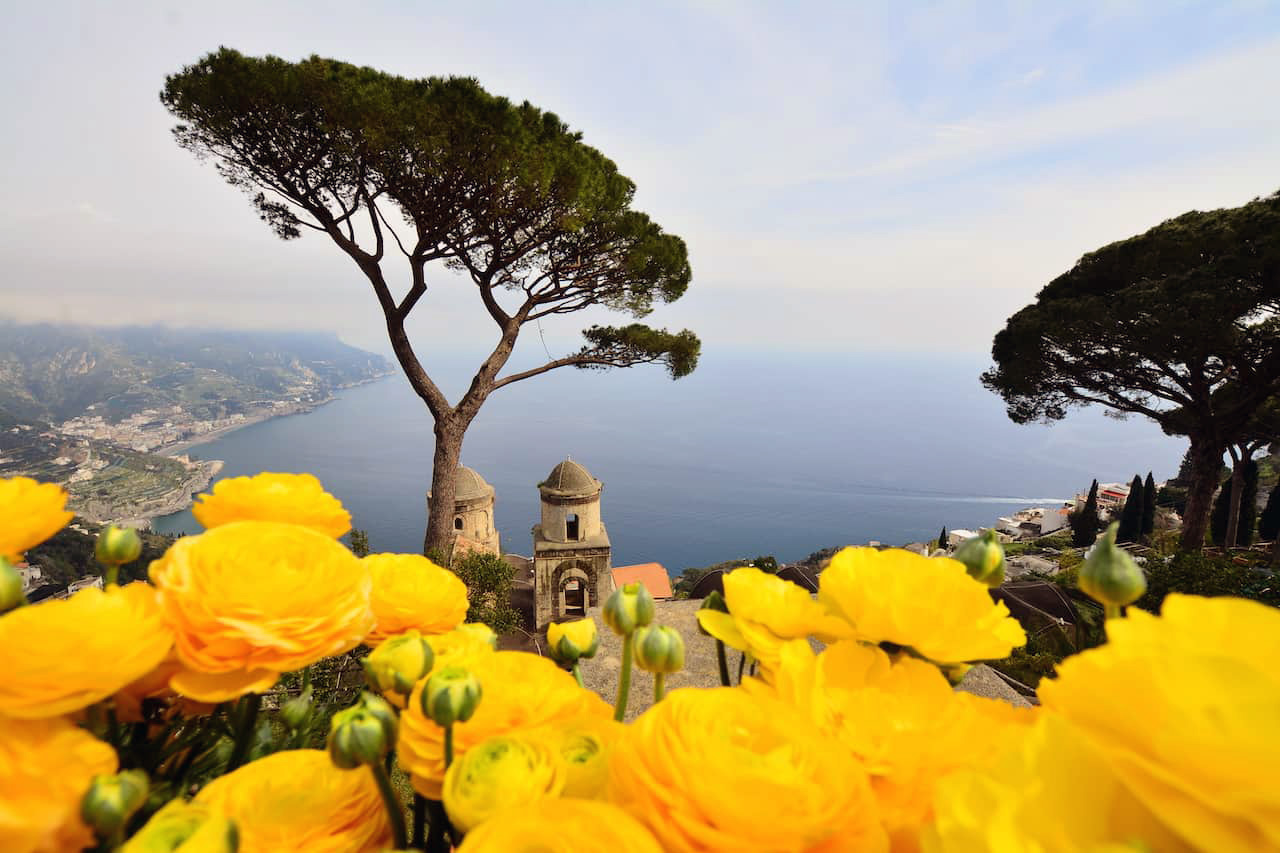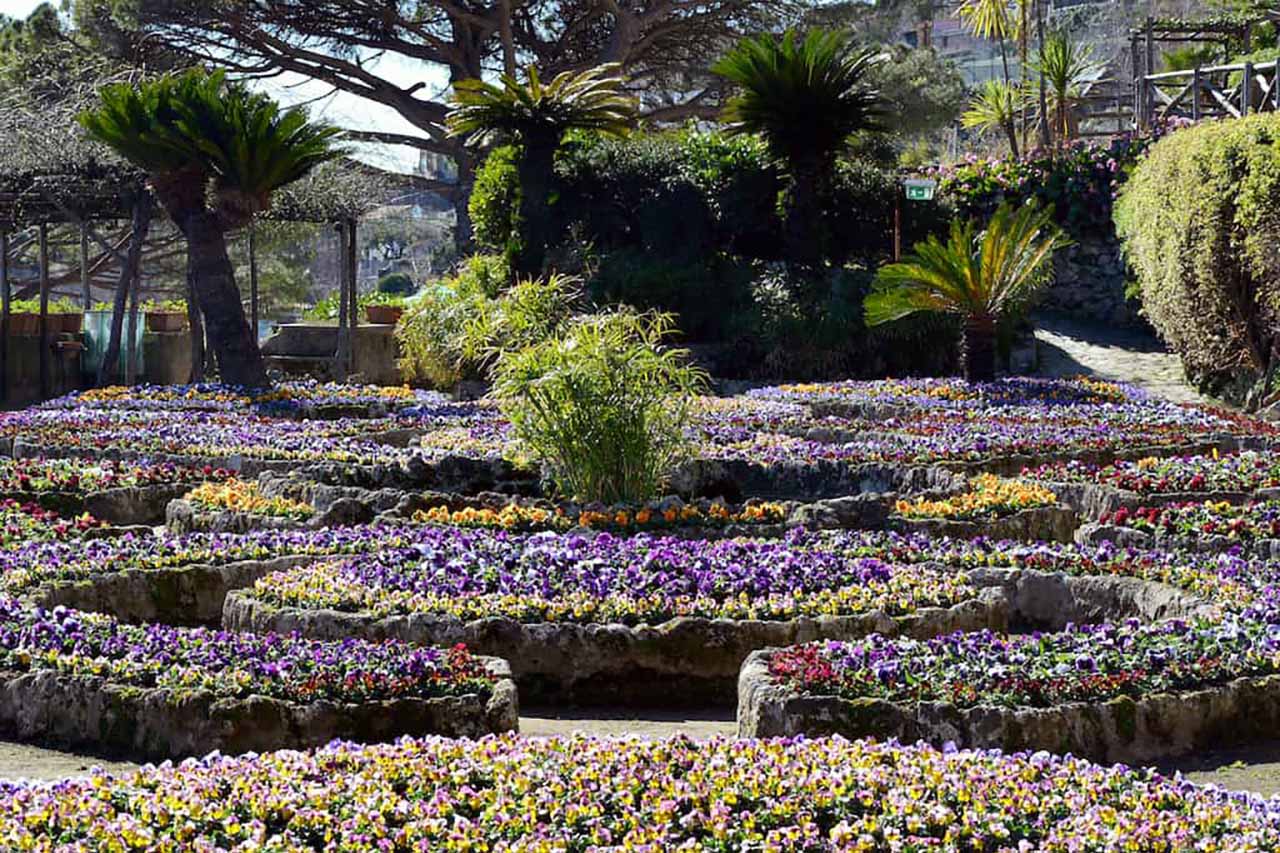Discover how the Amalfi gardens innovated landscape aesthetic. From the Grand Tour to the Bloomsbury Group and the present days
November 17th, 2020.By Alessio Amato
The garden has always been a place where emotions and comfort could grow. A special spot where you can get in touch with the energy of nature, the sun, the wind, the ocean and feel good. If we think about the origin of the word paradise, not many people would know that it was linked to the idea of a walled garden, a typical garden of ancient times.
The Amalfi Coast has always been blessed with rich vegetation that helped the area become one of the wealthiest places during the Middle Ages: the coast specialized in the wood trade and the production of vessels. Later, the landscape started to evolve when they began importing lemon, initially used for healing scurvy, and introduced to the terrace system. But in the 18th century, during the Grand Tour, botany had a new renaissance on the Amalfi Coast, and researchers came to study the local vegetation and introduce new flowers and plants.

First steps
In 1710 Pier Antonio Micheli was one of the first botanists who went to the Amalfi Coast to observe the woodwardia radicans, a fern species in the nature reserve Valle delle Ferriere at Scala. During the middle of the nineteenth century, the Scottish botanist Francis Neville Reid came to Ravello and turned Palazzo Rufolo into a villa full of flowers and plants, introducing new types of roses that were cultivated and cared for by the trusted gardener Luigi Cicalese.
The exchange of letters between the Lord and his gardener preserves a lot of information on the botany of the villa. He successfully combined the popular idea of the romantic garden of the nineteenth century with the coastal landscape, creating a balance of ruins and vegetation that inspired the Klingsor’s magic garden of Wagner. Among the different varieties of vegetations he introduced, there are the Liriodendron tulipifera, known as the tulip tree, or the Banksia integrifolia, the Davidia involucrata, also called the dove-tree, the Akebia quinata, the Amelanchier Canadensis, the Asimina triloba, the Sequoia sempervirens, and the Cedrus deodara.

The trailblazers
The Amalfi Coast welcomed during the first half of the twentieth-century trailblazer botanists such as the British Harold Peto and Edwin Lutyens, essentials for creating a link between architecture and gardens, Vita Sackville West, and Gertrude Jekyll.
The English author and botanist Vita Sackville West left her mark in Ravello’s history and gardens. The first time she came to the Amalfi Coast was with Violet Keppel, the illegitimate daughter of Ernest Beckett, Villa Cimbrone owner, as her partner. After they broke up, Vita kept coming back.
During the years the Villa hosted the Bloomsbury Group meetings, a group of intellectuals and artists originated during WWII in a London neighborhood called Bloomsbury. The prestigious group included people like Vita Sackville West and some celebrities such as Vanessa Bell and Virginia Woolf. And with the well-known British poet Virginia Woolf, Vita started a romantic relationship once the one with Violet ended. Maybe this love affair kept her from being recognized more as a landscape artist, but we can still admire her talents in her home in Kent, Sissinghurst Castle.

The importance of female designers
British artist and writer Gertrude Jekyll was undoubtedly one of the most influential garden designers the world has seen. She visited the Amalfi Coast at the beginning of the XX century. Thanks to her contribution, garden design is recognized as a form of art alongside poetry, painting, sculpture, and music. The gardens of Hestercombe House are a beautiful example of her skilled way of merging harmony and contrast. She also worked with Vita Sackville West for the renovation of the gardens of Villa Cimbrone.
«The Amalfi Coast can be divided into different layers depending on the altitude. There is the typical Mediterranean landscape on the mountains, while close to the sea, locals plant grapevines, olive, and lemon trees, helping like this with the necessities. This way, the Amalfi Coast farmers kept traditions and their skills intact while preserving the landscape at the same time. Nowadays, landscaped architects seem to have abandoned our roots preferring to choose exotic flowers and plants and more formal gardens», says Gaetano Amato, botanist, and gardener of Hotel Caruso in Ravello.
Source of inspiration
On the Amalfi coast, many still call their vegetable garden a garden. Most of the grounds boast spectacular views that make the days in the fields very different. Perhaps the coastal green areas embody the true meaning of botanical art.
These areas’ shapes and colors have attracted European botanists who wanted to blend coastal traditions with their knowledge. From this craftsmanship, real works of art were born, which inspired artists of the past and continue to be a point of reference for international designers today and must be handed down to future generations.
(Translation by Michela Pandolfi)
